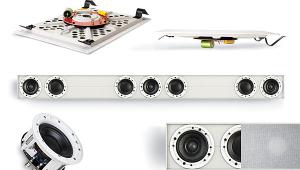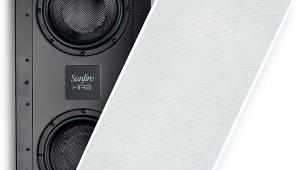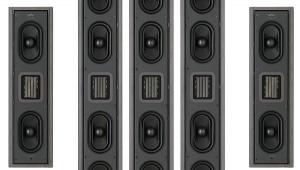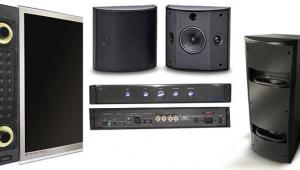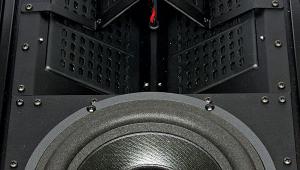I havent any word to appreciate this post.....Really i am impressed from this post....the person who create this post it was a great human..thanks for shared this with us.
debt consolidation loans
BG Radia BGX-4850 In-Wall Subwoofer System Page 2
Wall-Easy
The 3.5-inch-deep BGX-4850 subwoofers easily fit in a standard wall without any special modifications, dog ears, or heavy-duty clamps to hold the enclosure tightly against the drywall. In fact, the subs will be a breeze to install for anyone who’s ever held a drywall saw and a cordless screwdriver (not necessarily at the same time). Even if you don’t install the system yourself—which is entirely doable—it’s still a bonus because the less time it takes your installer to install the sub enclosures, the lower your labor bill will be.

Inappropriately named NCBs (new construction brackets) are required for retrofit installations as well as new construction. Two grille options are available, and your choice depends on whether the install is a retrofit or new construction. For new construction, the NCB and sub enclosure are installed before the drywall. When the wall goes up, the contractor cuts a hole in the drywall around the 7-inch-wide protective cover on the front of the enclosures. After the wall has been painted, the cover is removed and replaced with a narrow 7-by-28-inch grille. In a retrofit application, the NCB is used as a template to cut the hole in the drywall. After you secure the NCB to the studs with four screws, you’ll screw the module into the NCB. After the speaker wire is attached, a 15-by- 29.5-inch grille snaps into place. This latter option isn’t as stealthy an install as the slender 7-inch grille, to be sure. However, since you don’t need to make any other modifications to the wall, it’s a decent trade-off.
I’m sure by now, you’re wondering, “How do they manage to fit 12—or, for that matter, even two—4-inch woofers sideways in a module that’s 3.5 inches deep?” That’s such a good question, I asked it myself. It turns out that the 3.5-inch depth spec is the installed depth. The remaining half-inch or so of the drivers extends through the opening in the drywall, and the grilles bow outward slightly to provide a smidgen of extra room.
All Amped Up
The system’s BGA-2104 power amplifier/controller is a standard rack-mount-sized component that generates two channels of 1,100 watts each. Each amplifier drives two modules connected in parallel. Since all processing and amplification happens in the BGA-2104, a single run of speaker wire is all you’ll need to connect the subwoofer modules to the amp. In terms of aesthetics, it has a basic LED display panel on the front with a large rotary encoder knob next to it. While it’s not ugly, the lackluster look may make you relegate it to one of the less prominent shelves in your rack. The main menu functions (including level, mode, crossover, phase, and input) are all accessible from the front panel via the encoder knob. Anyone who has ever worked with a subwoofer will find it easy to set up, but the amp is somewhat slow to respond after it receives a menu command. The included creditcard-style IR remote control lets you turn the sub on or off—the system does have auto signal sensing capability with three sensitivity settings. You can also change the volume level and switch between user-adjustable Music and Movie preset modes. There are also power and mode triggers. It’s unusual for a subwoofer this expensive to not include some sort of automatic room correction circuitry, but according to BG, it’s not that necessary thanks to the acoustic benefits of the four separate sub modules. (More on that in a moment.)

The most frustrating part of the installation will probably be connecting the speaker wires to the outputs on the back of the subwoofer amplifier using the two included Neutrik SpeakOn connectors. Levitsky says BG likes to use these locking speaker connectors because they provide a highly reliable connection that protects against electric shock and shorting. That’s correct, but it still doesn’t make them any easier to terminate. Fortunately for me, Levitsky offered to do the wiring. However, I did have to let him borrow a tiny screwdriver to do the job.

The Why Four and the Where Four
If the amp has only two channels, what’s up with having four modules? Couldn’t BG have just made the modules a little taller, added a few more drivers, and called it a day using only two?
First of all, in order to achieve the volume levels that are required for THX Ultra2 certification, the system needs driver surface area. (BG also makes the $4,995 BGX- 2450 that includes the same amp and two of the sub modules. This configuration is THX Select2 certified and may be fine in a smaller room and satisfying at lower listening levels. ) However, volume is only part of the story.
- Log in or register to post comments


I definitely need 1 of those. just bookmarked this post on my iphone 7 cases thanks again for sharing!



